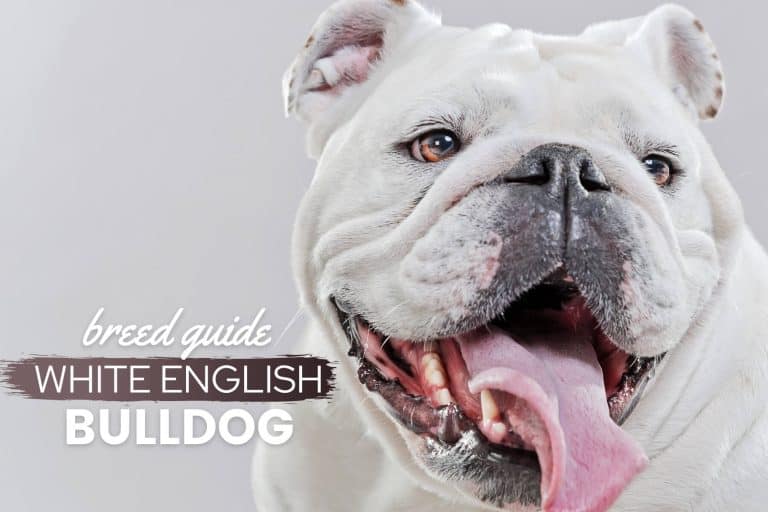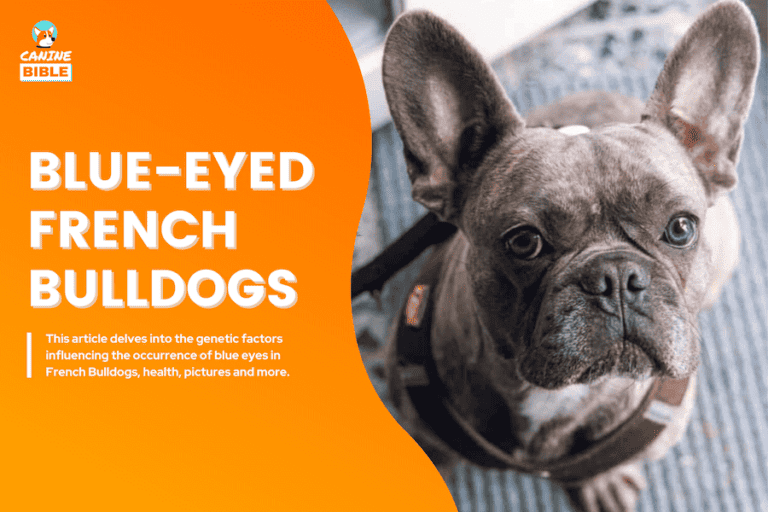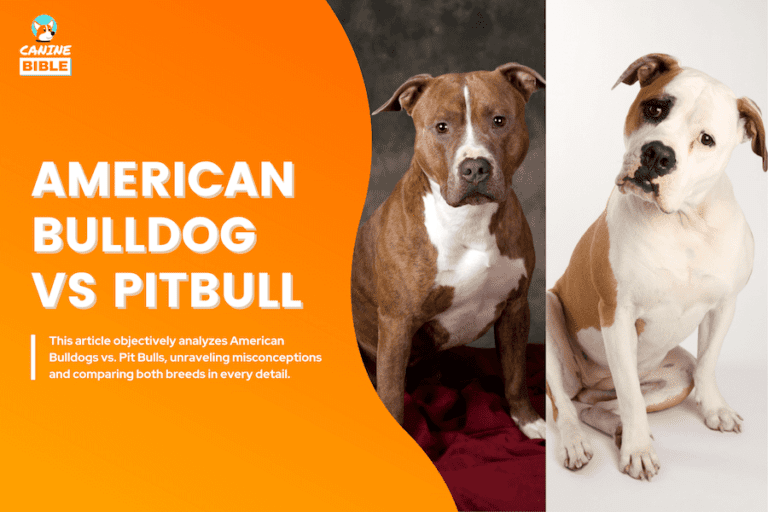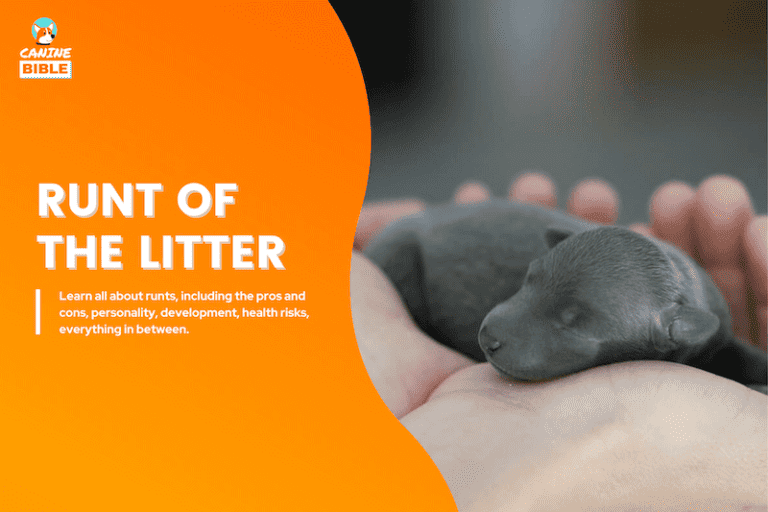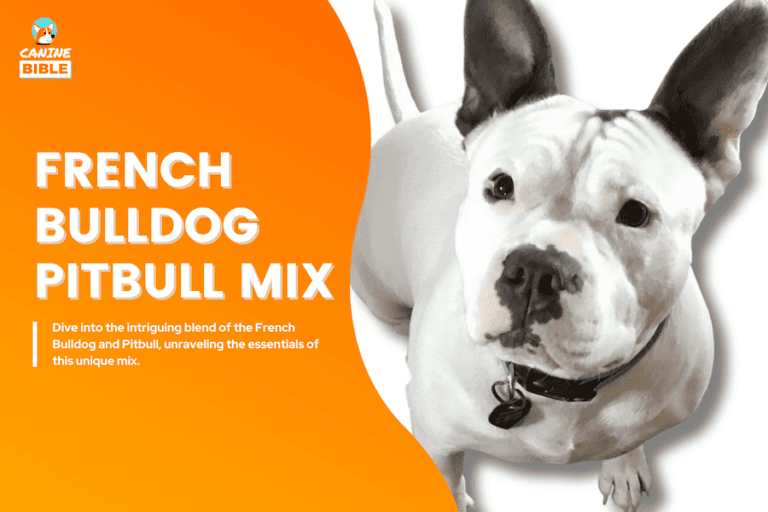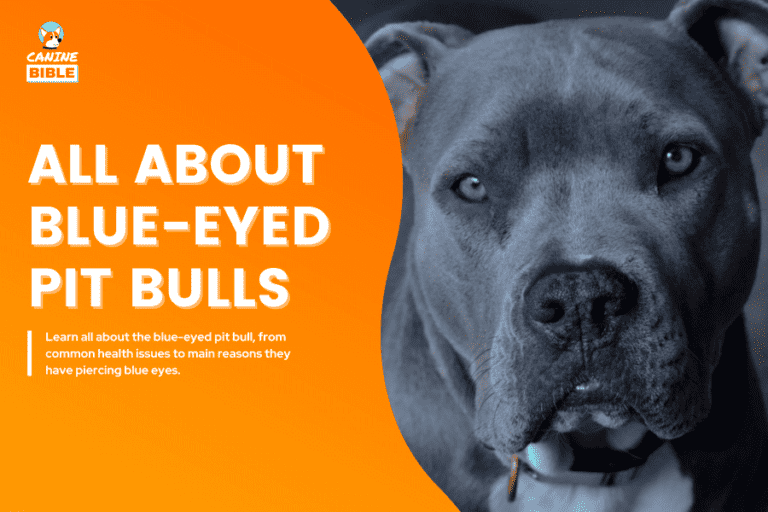All Goldendoodle Colors & Coat Types: Guide & Pictures
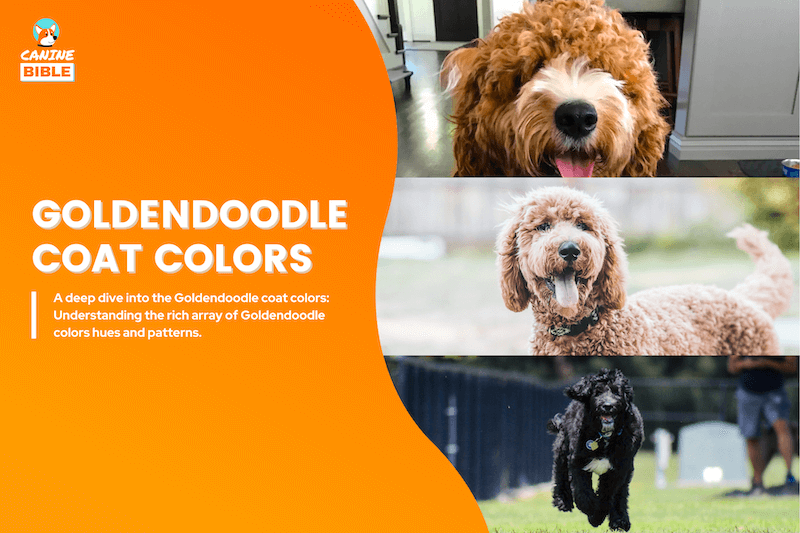
Canine Bible is reader-supported. We receive affiliate commissions via some of our links. This doesn’t affect rankings. Learn more.
This is the ultimate guide on Goldendoodle colors and coat types. Goldendoodles have surged in popularity thanks to their affectionate nature, intelligence, low-shedding coats, and adorable looks. This hybrid dog breed has inherited the best traits from their parent breeds: the Poodle and the Golden Retriever.
With the breed’s rising demand, breeders have developed Goldendoodles in colors you might never have imagined. From rare multicolored Goldendoodles, parti and phantom Goldendoodles, to apricot and even blonde Goldendoodles. But with such a wide array of Goldendoodle colors available, how do you choose the right one? Did you know the coat color of a Goldendoodle is not just a matter of aesthetic preference but can also indicate the dog’s genetic makeup and health?
In this guide, we will cover every Goldendoodle coat color variety to help you find your favorite and understand the nuances of Goldendoodle coat colors and what they mean for your pet. Let’s dive right in!
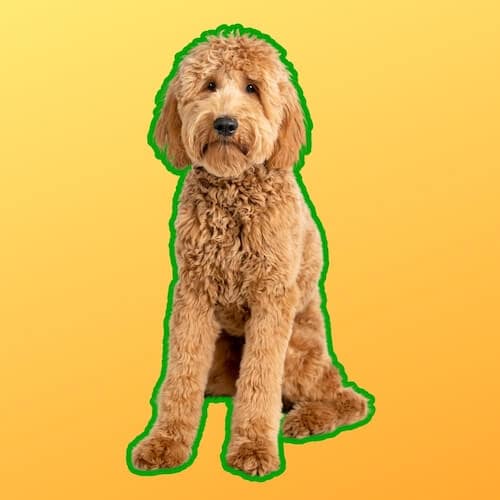
How Genetics Influence Goldendoodle Colors
A Goldendoodle’s coat color is determined by the combination of genes it inherits from its parents. Each dog carries two copies of every gene, one inherited from each parent. The interaction between these genes can result in a variety of coat colors. Some genes are dominant, meaning they will express their trait even if only one copy is present, while others are recessive and require two copies for the trait to be expressed.
The primary genes that influence coat color in Goldendoodles are found at the E, A, B, D, and K loci. These genes control aspects such as whether the coat will express black or red pigments, the distribution of color, and the intensity of the color.
E Locus (MC1R gene)
Determines whether the coat will express eumelanin (black or brown pigments) or pheomelanin (red or yellow pigments). For example, a Goldendoodle with two recessive “e” alleles will have a red or apricot coat.
D Locus (MLPH gene)
Influences the dilution of the color, with two recessive “d” alleles diluting black pigment to gray and red pigment to cream.
K Locus (CBD103 gene)
Controls the dominance of the black color, where the dominant “K” allele can suppress the expression of other colors and patterns.
B Locus (TYRP1 gene)
Affects the intensity of the black pigment, turning it into brown in dogs with two recessive “b” alleles.
A Locus (ASIP gene)
Determines the pattern of the coat, influencing whether a dog has a solid color, sable, or agouti pattern.
Why Are There So Many Goldendoodle Colors?
When breeding a Poodle with a Golden Retriever, the resulting Goldendoodles inherit a combination of these alleles genes, leading to the wide variety of coat colors observed in the breed. Understanding these genetic principles helps breeders predict the potential colors of Goldendoodle puppies. It allows potential owners to select a puppy that will grow into a dog with their preferred coat color.
How Many Goldendoodle Colors Are There?
Based on our research, we’ve been able to identify up to 32 Goldendoodles coat colors. We might have yet to discover more, but we will keep this article updated as we find more. Below, we look at different Goldendoodle colors (with pictures) and the differences between each. We also discuss what makes each color unique and so recognizable.
Goldendoodle Coat Pattern & Appearance
There are three prominent types of coat patterns in Goldendoodles: curly, straight and wavy. Your Goldendoodle coat type will depend on the kind of curl gene they inherit from each parent. You can perform an at-home dog DNA test to know what coat type and color your Goldendoodle puppy will have. A swab of your dog’s cheek is all you need to scientifically determine your Goldendoodle’s puppy adult coat type.
Curly Coat
Curly coats are present in Goldendoodles when each parent passes down a curl gene, also known as KRT71. Curly coats are the most popular coats in Goldendoodles and are seen more frequently in F1B and F3 breedings. These types of coats are considered to be the most non-shedding kind.
Straight Coat
Goldendoodles get a straight coat when a non-curl gene is from each parent. However, some furnishings and a “fluffy” texture will still be visible in some body parts.
Wavy Coat
You can expect wavy coat doodle when Goldendoodles get one curl gene from one parent and a non-curl gene from the other.
Goldendoodles With Improper Coat
Did you know the RSPO2 gene is responsible for the “Furnishings” on your Goldendoodle? Furnishings are the longer facial hair, including eyebrows, mustache, and beard, giving the Goldendoodle a “scruffy dog” look—a characteristic trait of this hybrid breed.
When the RSPO2 gene is absent in your Doodle, it is known as an “improper coat” Goldendoodle. They tend to shed more than Goldendoodles, who carry furnishings, and they look more like Golden Retrievers. To ensure an adequately coated Goldendoodle, you must DNA test the parents or puppy before getting one. You can use Wisdom Panel, a reputable dog DNA test company. If you have a family with allergies, a Goldendoodle with an incorrect coat is not the best match for you.
Goldendoodle Coat Length
In most dogs, coat length is controlled by a single gene called FGF5. Long hair is a recessive trait, which means that for a dog to be long-coated, the FGF5 gene needs to be inherited from both parents. This exactly happens with Goldendoodles; both parent breeds are long-coated, and all Goldendoodles carry two genes for a long coat (L/L). The Goldendoodle coat should be about 2 to 3 inches in length.
Goldendoodles Coat Color Changes
One of the unique aspects of Goldendoodles is that their coat colors can change as they grow from puppies into adult dogs. This transformation is a fascinating genetic trait inherited from their Poodle ancestry. Many Poodles carry a gene known as the “fading gene,” which causes their vibrant coat colors to lighten as they age. This gene can be passed to Goldendoodles, resulting in similar fading patterns.
Dogs of any age, gender, or breed can also experience pigment changes in their skin and coat. Medications, sunlight, nutritional status, and skin disease can also change a dog’s coat color. Generally, puppies will change color as they mature, especially light and medium color Goldendoodle coats. The exceptions are black and darker brown Goldendoodles. However, these can still change to grey, silver, or blue if they carry the recessive gene. A good tip is to get a Goldendoodle color slightly darker than your anticipated dog coat color, as it will likely lighten as it grows.
What Color Will My Goldendoodle Puppy?
Goldendoodle puppy coat colors will fade, lighten, or dull to another color known as “clearing.” If your puppy keeps the same color coat into adulthood, this is known as “holding.” Goldendoodles tend to hold their puppy colors around their ears and muzzle. Typically, the final coat color of a Goldenpoodle will settle and stay when they reach 4 to 6 months of age. That is when puppies lose their puppy coats, according to the AKC. However, this time frame varies from breed to breed and can start at 12 weeks or wait until they’re one year old.
Feeding Goldendoodles the wrong diet (kibble) can dramatically affect their coat, skin and health, and overall health. It’s key to feed the best dog food to your Goldedoondles to keep their Doodle’s coat healthy and shiny.
Goldendoodle Colors
Here is a compilation of the most popular, not-so-popular and rarest Goldendoodle colors.
Brown Goldendoodle
Brown Goldendoodles are the most popular coats for a Goldendoodle. These dogs have a deep brown color and are very noticeable in light areas. According to the AKC, the brown Goldendoodle is its type of dog breed.
White Goldendoodle
White Goldendoodles resemble a cream Goldendoodle but have a lighter coat, giving them snow-colored fur. The coat comes with two recessive traits from the parents given to the puppies.
Silver Goldendoodle
Sliver Goldendoodles are dogs that seem black when they are puppies, but later, their color shows. Sliver Goldendoodles have their color come from their poodle side. They are mistaken for grey doodles, but their coat is much lighter than their grey counterpart.
Apricot Goldendoodle
Apricot Goldendoodles are most wanted within the Goldendoodle breeds and shades. This Goldendoodle color is among the most wanted. It’s a color that is increasingly becoming more popular on social media.
Apricot Mini Goldendoodles
Apricot And White Goldendoodle
Red Goldendoodle
The red Goldendoodle is just as popular as the Apricot Goldendoodle. It has a rich shade of dark brown-red and a fiery appearance and is the brightest among all other Goldendoodle colors.
Reddish Goldendoodle
The reddish Goldendoodle is just a slightly lighter version of the red one.
Cream Goldendoodle
Cream Goldendoodles and white Goldendoodles are often mistaken for each other because of their similar appearances. Other multicolored Goldendoodles are bred from cream Goldendoodles, though the cream is an official color.
Black Goldendoodle
Can Goldendoodles be black? Yes! Black Goldendoodles are a rare color of Goldendoodles, mainly because of a recessive gene found in a golden retriever or Poodle. Parents must carry the gene to pass it on to the offspring. This makes this one of the rarest coats.
Black Phantom Goldendoodle
Like the phantom Goldendoodle, this dog has the same marking as the phantom doodle, except its markings are white instead of tan. Like the other rare coats, this gene is a recessive gene both parents must have.
Black Tuxedo Goldendoodle
These doodles have a white nose, chest, and paws, and their main is black, looking like a suit on the dog; recessive genes are passed onto the offspring.
f1b Black Goldendoodle
F1B Goldendoodle is a product of “backcrossing” where an F1 (first generation) Goldendoodle is crossed with a poodle, resulting in 75% poodles and 25% Golden Retrievers, which results in unique coat color and coats that shed less.
Parti Goldendoodle
Parti Goldendoodles have two different color coats; the second coat is usually white. Recessive genes breed these adorable dogs, but to get one of these dogs, you need to breed with rare recessive genes with other rare genes; a dominant trait during the breeding can hide the party coat.
Red Parti Goldendoodle
Black & White Goldendoodle
These Goldendoodles have white chests and white hair on the head, with the rest of the coat being black. These dogs are often mistaken for Tuxedo Goldendoodles but have different and more distinct markings than black and white Goldendoodles. Black and white Goldendoodles are bred from a golden retriever and a parti-poodle and have the traits follow through.
Red & White Goldendoodle
These dogs are almost similar to the black and white Goldendoodle, except instead of its main coat being black, it is red instead, which is a rarer coat color, making it a rare dog. It has a white chest, parts of the face white, and its feet.
Sable Goldendoodle
Sable Goldendoodles are a mystery at birth without a DNA test, as they are born black or dark brown. This fades out as they age, and the rest of the coat becomes cream, leaving the black color on the face and ears.
Merle Goldendoodle
Merle Goldendoodles are mainly bred from a poodle; the other parent is an Australian shepherd or Border Collie (not a Golden Retriever). However, merle doodles can also come from two Goldendoodles. This doodle type is not classified as a Goldendoodle but instead called Aussiedoodles.
Unlike the party-Goldendoodle, the dominant genes overlap the solid coat, and one of the parents must have a merle recessive gene. Due to the dominant traits, breeding two merle doodles can lead to the puppies being blind, deaf, and having other disabilities.
Red Merle Goldendoodle
Chocolate Merle Goldendoodle
Grey Goldendoodle
Like Merle Goldendoodles, Grey Goldendoodles has an unknown coloration at birth, born a darker color than its genetic makeup states. As this dog matures, this Doodle shows through a darker silver color.
Grey doodles are bred from an Australian shepherd and a Golden retriever. Even without the Poodle, these are considered Goldendoodles.
Phantom Goldendoodle
Phantom Goldendoodles are confused with their family dog, the black & white Doodle, and the part Goldendoodle. The markings resemble a Yorkie/Manchester. The second coat of the dog will appear on its muzzle, eyes, and lower legs.
The colors are often tan but vary in white, silver, red, and black. Each Phantom doodle is unique. They have an extremely rare coat, and you can instantly tell it’s a phantom Goldendoodle as soon as this dog is born.
Tan Goldendoodle
Our favorite tan Goldendoodles’ parents are an Apricot Goldendoodle and a Cream Goldendoodle. This coat comes in many different shades, resembling a golden retriever.
Blue Goldendoodle
A blue Goldendoodle resembles a mix of black and grey but has a blueish tint, and its parents are a blue poodle and a golden retriever. The dog seems blue everywhere except on its stomach.
Blonde Goldendoodle
Goldendoodle Golden
Golden Goldendoodles are some of the most common types of color you will see in Goldendoodles, as both parents have the golden color in their genes. Puppies are a solid golden color, similar to a golden retriever’s coat.
Caramel Goldendoodle
Caramel coat is a dominant trait passed from both parents of the Goldendoodle and is confused with the Golden shade, but this shade is much more orange and darker than the golden Goldendoodle color.
Brindle Goldendoodle
These dogs have stripes on their body, each having different colors and strips varying from dog to dog. Brindle is a recessive color, making it hard to pass on if dominant traits do not override it.
Yellow Goldendoodle
The yellow color comes from Labradors but can come from poodles or golden retrievers, giving a lighter look than the golden coat but darker than the cream/white color.
Tri-Colored Goldendoodle
Goldendoodles get their tri-colored coat from a tri-colored poodle and recessive color traits from both parents, resulting in a tri-colored pup.
Mini Goldendoodle Colors
Goldendoodle Colors: Which One Should You Get?
In conclusion, while the spectrum of Goldendoodle colors adds to the breed’s appeal, the joy of companionship with one of these remarkable dogs goes beyond their external appearance. By focusing on health, temperament, and lifestyle compatibility, you’re more likely to find a Goldendoodle that enriches your life in every way, becoming a cherished family member for years to come. We hope you enjoyed this colorful article and wish we helped you narrow your choices.
Like It? Subscribe & Share!
Sources
Canine Bible uses only high-quality sources, including peer-reviewed studies, to support the facts within our articles. Read our editorial process and product review methodology to learn more about how we fact-check, test products, and keep our content accurate, reliable, and trustworthy.
Canine Bible authorship represents the unified voice of our entire editorial team and our in-house veterinarians rather than a single author. Each article, blog post, and review published under the Canine Bible name undergoes a rigorous review process, involving all team members to guarantee accuracy and up-to-date in accordance with the latest veterinarian research. This collaborative effort is an integral part of our editorial process and aligns with our four pillars of content creation. This approach ensures our content is backed by expert knowledge and factual information, offering our readers reliable, actionable, and trustworthy content.


